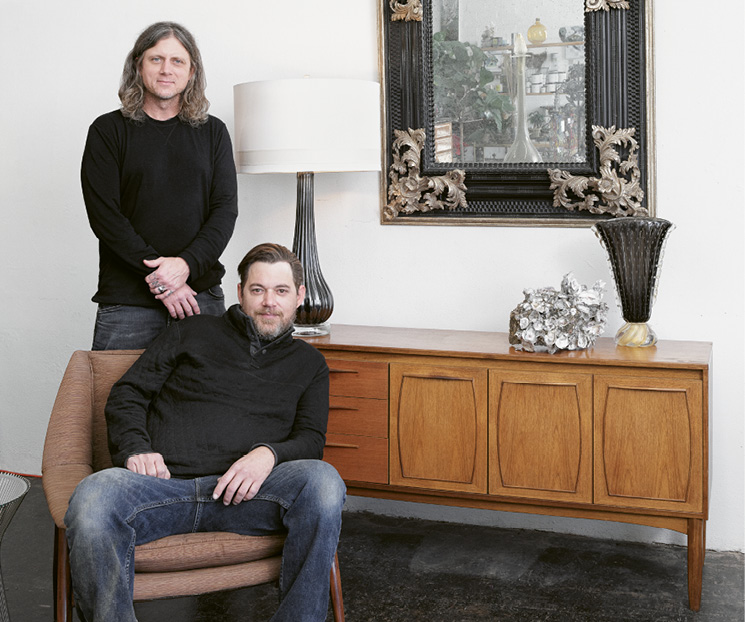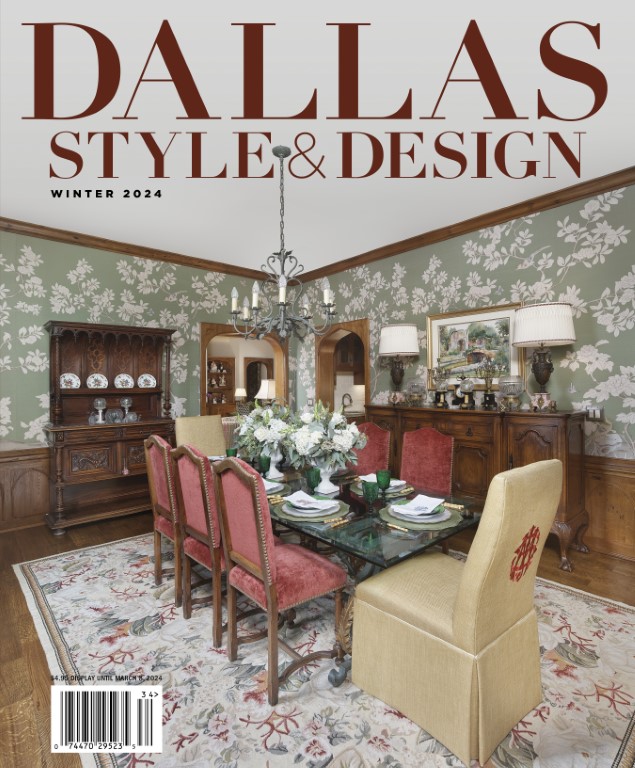
In the 1939 movie on borrowed time, young Pud and his grandfather have a conversation about death and Pud asks his grandfather, “Where do they go?” And his grandfather replies, “Where the woodbine twineth, sonny.”
For Michael Smith, it’s an apt name for his family’s antiques and fine furniture showroom, Woodbine Interiors. It’s an oasis of mid-century modern creations, teak cabinets and furniture hailing from the 18th century. And when he’s in the shop, he’s truly in heaven, focused on restoring brass pieces and getting a fine sheen over a centuries-old piece of furniture.

“The services that we are capable of providing are in very high demand,” Smith says. “I’m realizing there are not a lot of people that do what we do.”
The journey to opening Woodbine Interiors in 2019 in Dallas’ Design District began when Smith was just a kid, learning welding from his uncle and exploring woodworking on his own. A chess set he made in the seventh grade won a contest, but for him, it’s just an item in a long line of things he’s made with his hands.
“He just had a knack for figuring things out and building things,” his father, Chadd, says.

Smith made furniture out of his truck, and then he opened his own cabinet shop. In 2005, he connected with Raymond Pittet of Pittet Architecturals. Known for his expertise in tapestries and antiques, Pittet hired Smith to restore antiques before offering him a full-time job that he could balance with his cabinetry business. From there Smith moved onto Ernesto Klun Antiques, where he managed the 21,000-square-foot showroom.
From these two men, Smith says he received reassurance to stay on the path he was headed.
“They were awesome, awesome people in my life that just encouraged me to keep on,” he says. “They let me do what I wanted to do and supported me. Over the years, I picked up a lot of little tricks on how to identify periods and countries of origin through materials. Just anything that they were able to share with me, I absorbed.”
In 2015, Smith opened his own showroom, collaborating with other dealers to offer a mix of traditional, modern and custom pieces. In 2019, Woodbine Interiors was born as a family affair. Smith’s brother, Christofer, quit his job to join. Together, they were able to survive the first year of the pandemic.
With experience working in car and furniture sales, Christofer first set out to manage the showroom but has since spent time in the workshop with his younger brother, building and restoring furniture. “In this endeavor, I’ve really learned about different craftsmen and artists,” he says. “The restoration and appreciating what somebody else has done and making it beautiful again has definitely become a passion.”

Rather than planning annual buying trips to Europe, Smith instead slowly but surely amasses Woodbine’s collection by exploring what’s out there every single day.
“I shop every day. I buy every day. I restore every day. I curate every day,” Smith says. “I might get a piece a day instead of taking three days to get 40 pieces.”
His clients come to him with pieces to give them a new life—turning a 19th-century Spanish urn into a table, adding LED recessed lighting to a refinished Broyhill credenza or custom lacquering a mid-century modern commode. In one instance, a client came to Smith with an 18th-century Lombardy commode, which he gutted and converted into a TV lift. While Smith personally would have rather restored it, he kept his client’s wishes at the forefront.
“It had a value of about $25,000, and I hacked it up,” he says. “I’m a purist at heart, but also I have a desire to do what my clients need. So, if they want me to do something that I’m opposed to, I’m still open to doing it. I have some clients that are very well-known designers who have told me I’m going to antique hell.”
But the showroom is also a display of restored pieces, particularly European-made furniture, using techniques such as French polish and the fine art of water gilding. Smith’s coveted skills have made Woodbine Interiors the go-to for high-end finishes.
Educating their customers on the history of each piece and how to maintain it for many years to come is also important. With Smith’s knowledge, buyers are able to learn who made the piece, when it was built, the historical setting, wood species and more.
“The forgotten arts—that’s one thing I’m passionate about,” Smith says. “You’re not cheating. You’re not cutting any corners. You’re not adding any new materials, any new techniques, any synthetics. It’s doing it the way it has been done for hundreds of years.”
Christiana Lilly is a freelance journalist in Pompano Beach, Florida. See more of her work spanning the arts, community news and social justice at christianalilly.com.













